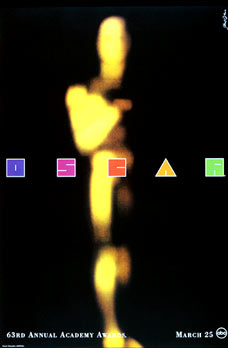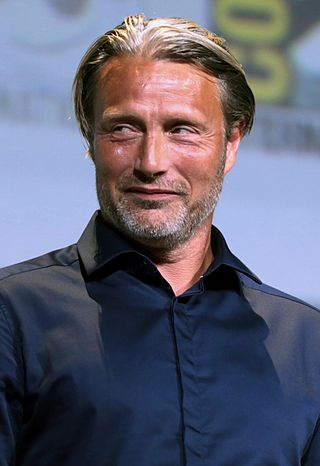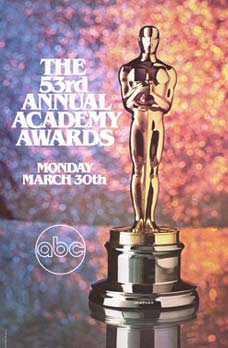Related Research Articles
The Academy Award for Best Picture is one of the Academy Awards presented annually by the Academy of Motion Picture Arts and Sciences (AMPAS) since the awards debuted in 1929. This award goes to the producers of the film and is the only category in which every member of the Academy is eligible to submit a nomination and vote on the final ballot. The Best Picture category is traditionally the final award of the night and is widely considered the most prestigious honor of the ceremony.
The Academy Award for Best International Feature Film is one of the Academy Awards handed out annually by the U.S.-based Academy of Motion Picture Arts and Sciences (AMPAS). It is given to a feature-length motion picture produced outside the United States with a predominantly non-English dialogue track.

The Academy Award for Best Animated Feature is given each year for the best animated film. An animated feature is defined by the academy as a film with a running time of more than 40 minutes in which characters' performances are created using a frame-by-frame technique, a significant number of the major characters are animated, and animation figures in no less than 75 percent of the running time. The Academy Award for Best Animated Feature was first awarded in 2002 for films released in 2001.
The Academy Award for Best Animated Short Film is an award given by the Academy of Motion Picture Arts and Sciences (AMPAS) as part of the annual Academy Awards, or Oscars, since the 5th Academy Awards, covering the year 1931–32, to the present.

The César Award is the national film award of France. It is delivered in the Nuit des César ceremony and was first awarded in 1976. The nominations are selected by the members of twelve categories of filmmaking professionals and supported by the French Ministry of Culture. The nationally televised award ceremony is held in Paris each year in February. The exact location has changed over the years. It is an initiative of the Académie des Arts et Techniques du Cinéma, which was founded in 1975.

Pelle the Conqueror is a 1987 epic film co-written and directed by Bille August, based upon the 1910 novel of the same name by Danish writer Martin Andersen Nexø. The film tells the story of two Swedish immigrants to Denmark, a father and son, who try to build a new life for themselves. It stars Pelle Hvenegaard as the young Pelle, with Max von Sydow as his father, and also features Axel Strøbye and Astrid Villaume.

The 73rd Academy Awards ceremony, presented by the Academy of Motion Picture Arts and Sciences (AMPAS), honored the best of 2000 in film and took place on March 25, 2001, at the Shrine Auditorium in Los Angeles, beginning at 5:30 p.m. PST / 8:30 p.m. EST. During the ceremony, AMPAS presented Academy Awards in 23 categories. The ceremony, televised in the United States by ABC, was produced by Gil Cates and was directed by Louis J. Horvitz. Actor Steve Martin hosted the show for the first time. Three weeks earlier in a ceremony at the Regent Beverly Wilshire Hotel in Beverly Hills, California held on March 3, the Academy Awards for Technical Achievement were presented by host Renée Zellweger.

The 63rd Academy Awards ceremony, organized by the Academy of Motion Picture Arts and Sciences (AMPAS), took place on March 25, 1991, at the Shrine Auditorium in Los Angeles beginning at 6:00 p.m. PST / 9:00 p.m. EST. During the ceremony, Academy Awards were presented in 22 categories. The ceremony, which was televised in the United States on ABC, was produced by Gil Cates and directed by Jeff Margolis. Actor Billy Crystal hosted for the second consecutive year. Three weeks earlier, in a ceremony held at The Beverly Hilton in Beverly Hills, California on March 2, the Academy Awards for Technical Achievement were presented by host Geena Davis.

Mads Dittmann Mikkelsen is a Danish actor, former gymnast and dancer. He rose to fame in Denmark as an actor for his roles such as Tonny in the first two films of the Pusher film trilogy, Detective Sergeant Allan Fischer in the television series Rejseholdet (2000–2004), Niels in Open Hearts (2002), Svend in The Green Butchers (2003), Ivan in Adam's Apples (2005) and Jacob Petersen in After the Wedding (2006).

The 78th Academy Awards, presented by the Academy of Motion Picture Arts and Sciences (AMPAS), took place on March 5, 2006, at the Kodak Theatre in Hollywood, Los Angeles beginning at 5:00 p.m. PST / 8:00 p.m. EST. The ceremony was scheduled one week later than usual to avoid a clash with the 2006 Winter Olympics. During the ceremony, AMPAS presented Academy Awards in 24 categories honoring films released in 2005. The ceremony, televised in the United States by ABC, was produced by Gil Cates and directed by Louis J. Horvitz. Actor Jon Stewart hosted the show for the first time. Two weeks earlier in a ceremony at The Beverly Hilton in Beverly Hills, California held on February 18, the Academy Awards for Technical Achievement were presented by host Rachel McAdams.

The 51st Academy Awards ceremony, organized by the Academy of Motion Picture Arts and Sciences (AMPAS), honored films released in 1978 and took place on April 9, 1979, at the Dorothy Chandler Pavilion in Los Angeles, beginning at 7:00 p.m. PST / 10:00 p.m. EST. During the ceremony, AMPAS presented Academy Awards in 23 categories. The ceremony, televised in the United States by ABC, was produced by Jack Haley Jr. and directed by Marty Pasetta. Comedian and talk show host Johnny Carson hosted the show for the first time. Three days earlier, in a ceremony held at The Beverly Hilton in Beverly Hills, California, the Academy Awards for Technical Achievement were presented by hosts Gregory Peck and Christopher Reeve.

The 53rd Academy Awards ceremony, organized by the Academy of Motion Picture Arts and Sciences (AMPAS), honored films released in 1980 and took place on March 31, 1981, at the Dorothy Chandler Pavilion in Los Angeles, beginning at 7:00 p.m. PST / 10:00 p.m. EST. The ceremony was scheduled to take place originally on the previous day but was postponed due to the attempted assassination of Ronald Reagan. During the ceremony, AMPAS presented Academy Awards in 20 categories. The ceremony, televised in the United States by ABC, was produced by Norman Jewison and directed by Marty Pasetta. Comedian and talk show host Johnny Carson hosted the show for the third consecutive time. Two weeks earlier, in a ceremony held at The Beverly Hilton in Beverly Hills, California, on March 15, the Academy Scientific and Technical Awards were presented by hosts Ed Asner and Fay Kanin.

The 56th Academy Awards ceremony, presented by the Academy of Motion Picture Arts and Sciences (AMPAS), honored the best films of 1983 and took place on April 9, 1984, at the Dorothy Chandler Pavilion in Los Angeles, beginning at 6:00 p.m. PST / 9:00 p.m. EST. During the ceremony, AMPAS presented Academy Awards in 22 categories. The ceremony, televised in the United States by ABC, was produced by Jack Haley Jr. and directed by Marty Pasetta. Comedian and talk show emcee Johnny Carson hosted the show for the fifth time. He first presided over the 51st ceremony held in 1979 and last hosted the 54th ceremony held in 1982. Nine days earlier, in a ceremony held at The Beverly Hilton in Beverly Hills, California, on March 31, the Academy Scientific and Technical Awards were presented by hosts Joan Collins and Arnold Schwarzenegger.

Anders Frithiof August is a Danish screenwriter for film and television.
The Robert Honorary Award has been given occasionally since 1986 as one of the Robert Awards by the Danish Film Academy. It is the Danish equivalent of the American Academy Honorary Award.
The Robert Award for Best Visual Effects is one of the merit awards presented by the Danish Film Academy at the annual Robert Awards ceremony. The award has been handed out since 1984, although numerous years in the 1980s and 1990s saw no honorees. Between 1984 and 2013 the award was given as the Robert Award for Best Special Effects, and since 2014 as the Robert Award for Best Visual Effects.
The Robert Award for Best Score is one of the merit awards presented by the Danish Film Academy at the annual Robert Awards ceremony. The award has been handed out every year since 1984, except 1988.

Ali Abbasi is an Iranian-Danish filmmaker. He is known for his films Shelley (2016), Border (2018), Holy Spider (2022), and The Apprentice (2024). Abbasi also directed the last two episodes of the first season of the series The Last of Us. He has received various accolades, including an Un Certain Regard award, four Robert Awards, and a German Film Award, in addition to nominations for seven European Film Awards, a Goya Award, and two Guldbagge Awards.
References
- ↑ Szalai, Georg (24 February 2016). "From Blue Dragons to Lolas, A Global Guide to Foreign Countries' Oscars". The Hollywood Reporter . Retrieved 2 April 2019.
- ↑ "Robert", Scope Film Guide. Retrieved 27 March 2010 Archived 13 August 2017 at the Wayback Machine
- ↑ John Sundholm; Isak Thorsen; Lars Gustaf Andersson; Olof Hedling; Gunnar Iversen; Birgir Thor Møller (20 September 2012). Historical Dictionary of Scandinavian Cinema. Scarecrow Press. pp. 328–. ISBN 978-0-8108-7899-0.